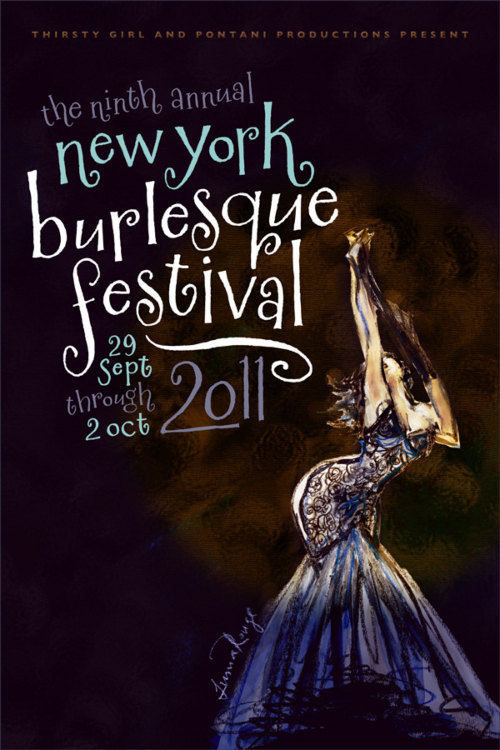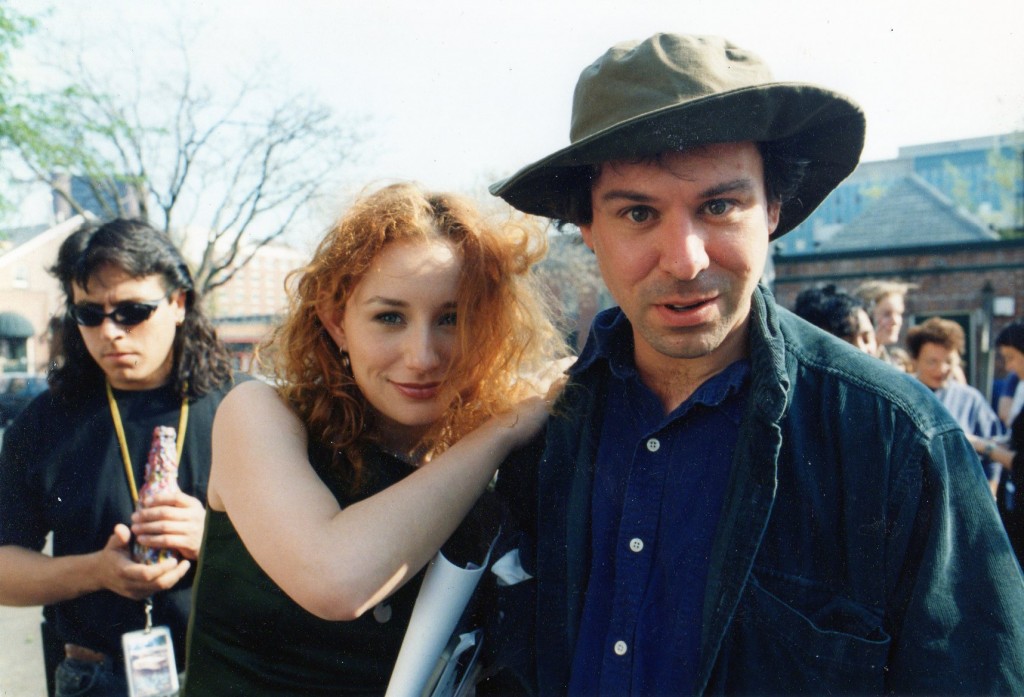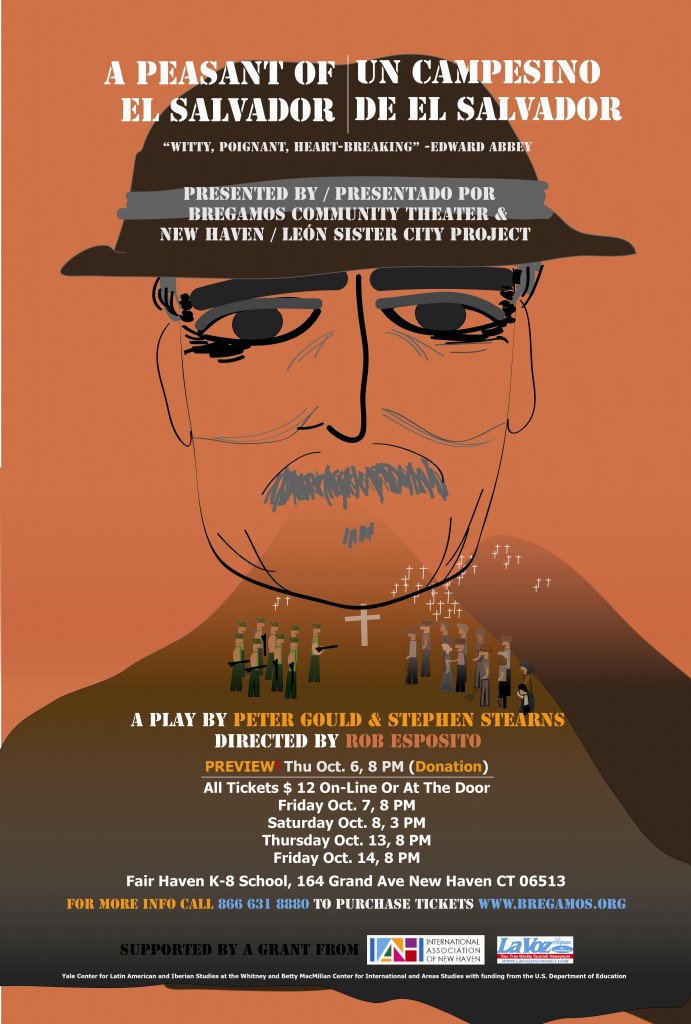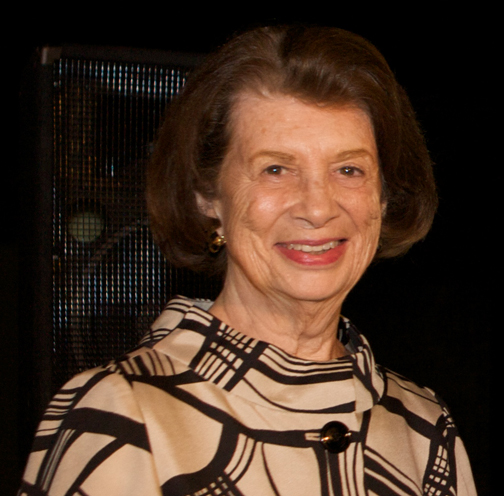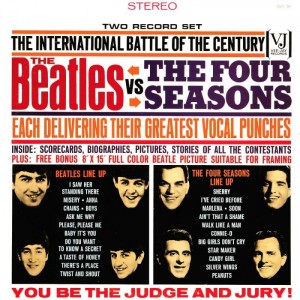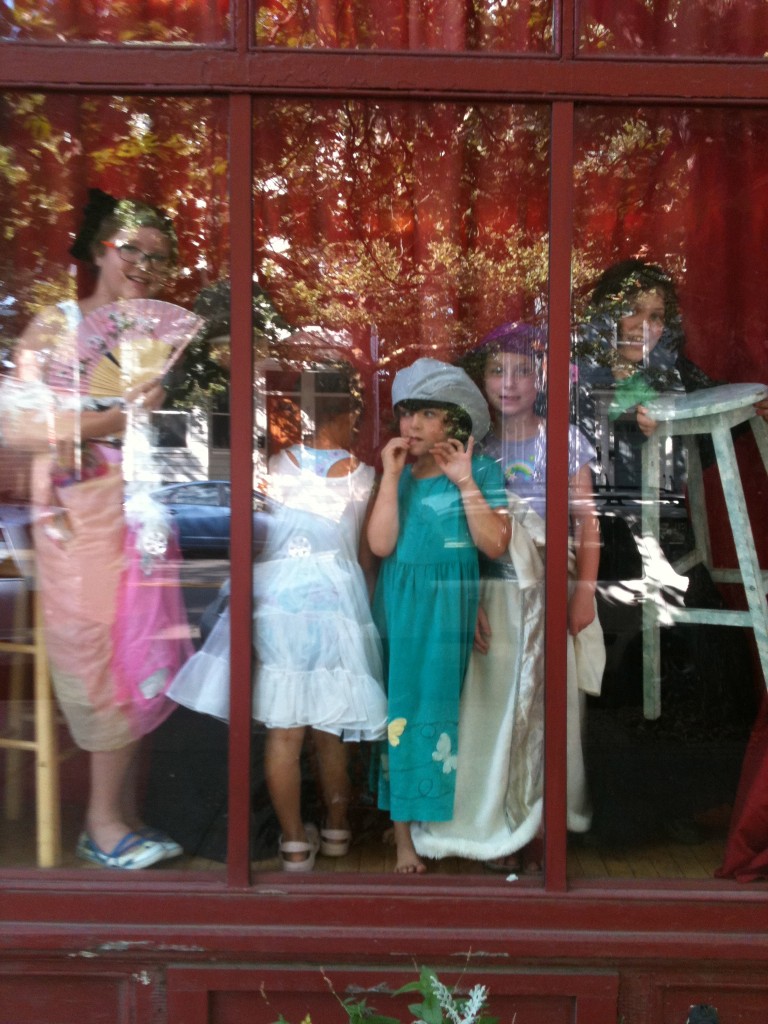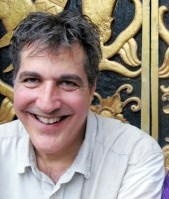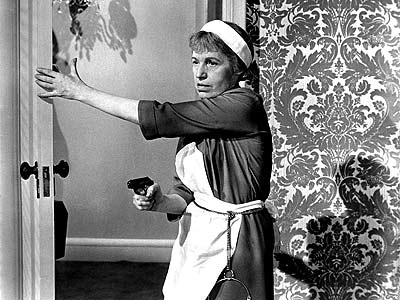
The cast of the Irish Repertory Theatre production of Brian Friel's Molly Sweeney, at the Long Wharf Theatre through Oct. 16.The actors never share a stage in the play, though they're not spaced too far apart on their separate playing areas. Photo by Carol Rosegg.
Molly Sweeney
By Brian Friel. At the Long Wharf Theatre through Oct. 16. Directed by Charlotte Moore. Set design by James Morgan. Costume design by Linda Fisher. Lighting design by Richard Pilbrow and Michael Gottlieb. Sound design by Zachary Williamson. Stage manager: Katrina Olson. Performed by Jonathan Hogan (Mr. Rice), Simone Kirby (Molly Sweeney) and Ciaran O’Reilly (Frank Sweeney).
I didn’t realize until I arrived at the Long Wharf and saw which doorway was lit that Molly Sweeney was playing at the theater’s Stage II space and not on the mainstage. I’d even seen photos of the set and not realized that its gigantic windows had been erected in the smaller space.
Yes, the play’s only got three characters and precious little movement. And yes, Stage II has a history of hosting monologue-heavy dramas.
Yet the last time, Long Wharf hosted a three-character talky drama by Brian Friel about varied reactions to a rare, virtually miraculous human transformation—a revival of Friel’s 1979 play Faith Healer, staged in 1994, the very year the playwright returned to that unusual structure and wrote Molly Sweeney—the Long Wharf stuck it on the mainstage. The dimensions of the playing area, as I remember it, were even smaller, with a single platform instead of the three required by Molly Sweeney. There was the same sense, then and now, of these platforms as lonely islands. We’re hearing stories which, while not as varied as those in, say, Rashomon, do contrast starkly in tone and intention and emotional unrest.
With Faith Healer, the island was further from the audience, the playing style tantalizing remote as well. In Molly Sweeney, the performers (not the all-star cast assembled for Faith Healer all those years ago, but a fine cast of well-honed, Friel-friendly actors from The Irish Repertory Theatre just up the road in New York City) are just a few feet from the front row, and at floor level even.
This proximity means they can’t help but be aware of the crowd which has gathered to hear their stories. Void versus awareness of others? It’s a matter of taste.
Director Charlotte Moore takes a lot of risks with the complementary yet often clashing rhythms of the piece. One actor, Jonathan Hogan speaks as prepared (if cloudy and lightly inebriated) public lecturer might, with direct, snappy, clarity. He sounds like a cross between Spalding Gray and Jimmy Stewart, with a little Gilbert Gottfried thrown in.
Hogan portrays a doctor who has performed surgery which has allowed Molly Sweeney—a middle-aged woman who’s been blind for nearly her entire life—to regain her sight. Ciaran O’Reilly, as Molly’s husband Frank, who has excitedly pushed her into the medical treatment, has more of a huckster spiel. Friel builds this character as a loving but rather selfish, and self-promoting guy who doesn’t stop to think whether other people’s feelings might be different than his own.
As Molly, Simone Kirby could play vulnerable or subservient, but adamantly and admirably doesn’t. Friel—and director Moore—allow three strong-willed characters to articulate their feelings with equal intensity, as anyone would if given the opportunity to soliloquize at length. The play is not so much about conflict—or even dialogue—as it is about natural differences. Ways of seeing, if you will.
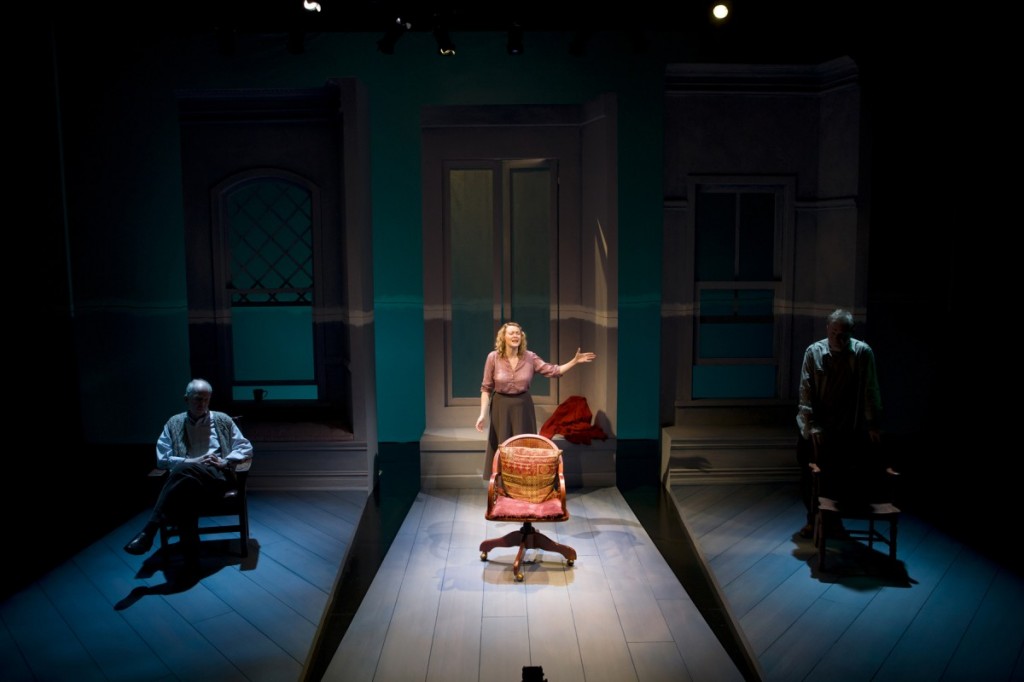
The three sides of Brian Friel's drama. Photo by T. Charles Erickson.
This is a measured, generally even-tempered production, with a strong center and no extremes. But there is one thing this production does do stridently: It telegraphs very strongly that Molly is once again blind. I guess you could call that a spoiler, but it registers in the first seconds of Charlotte Moore’s staging, when Simone Kirby enters, groping towards her chair with arms outstretched. She also keeps her eyes clamped shut for nearly the entire performance.
This is at odds with an introductory note in Friel’s script:
Most people with impaired vision look and behave like fully sighted people. The only evidence of their disability is usually a certain vacancy in the eyes of the way the head is held. Molly should indicate her disability in some such subtle way. No canes, no groping, no dark glasses, etc.
After the words begin to take hold, actions matter less, and the show finds its own way, balances all the tones, pitches, accents and gestures into something not far from naturalism. Friel’s script, similiarly, does not sensationalize. There are no horrible tragedies, no surprise twists, even tip-offs to how the tale will end.
Kirby overdoes the sightlessness, but there are plenty of subtleties to savor: on the night I attended, Hogan had to cough while just beginning his opening speech, and rather than pretending it hadn’t happened, he excused himself. That was not only endearing but legitimizing for his ingratiating character, who stumbles quite a bit during the play in ethical and moral terms.
A fascinating play, this. Each monologue is so tightly written as to seemingly render the others superfluous. They blend in ways beyond the mere additions of perspective and details. When not speaking, the characters stare out those huge windows (a neat set design by James Morgan, marred only by a tacky fuzzy line that flows from walls to windows, in a too-obvious linking device). The silences and reflections and pauses can be as riveting as the speeches. This is a show about blindness in which people spent lots of time staring silently into space.

Simone Kirby. Photo by T. Charles Erickson.

